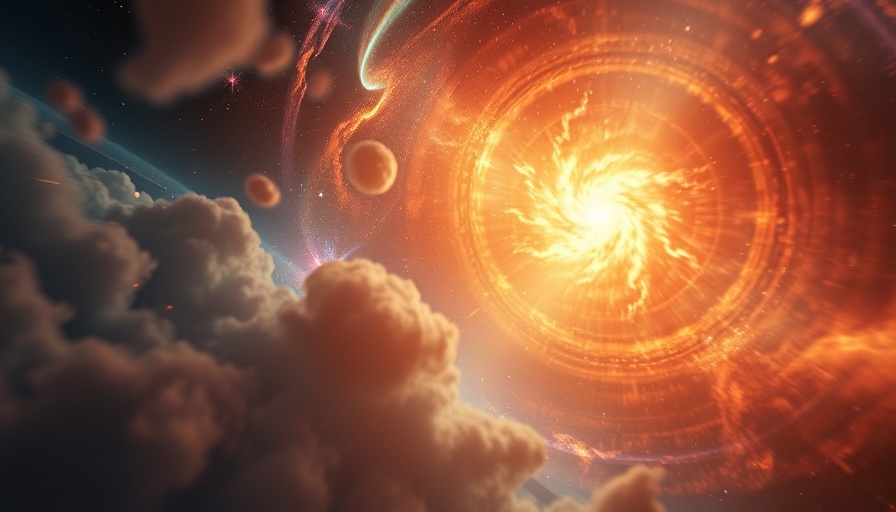
Stellar Oddity: The Infinity Galaxy's Shape and Significance
In a stunning celestial discovery, astronomers have unveiled a cosmic structure they’ve named the “Infinity Galaxy,” formed from the collision of two galaxies. This remarkable shape, reminiscent of the infinity symbol, piques interest not just for its appearance but for its potential to reshape our understanding of black hole formation.
Black Holes: A Cosmic Mystery
Located 470 million years after the Big Bang—a time when the universe was just beginning to evolve—this discovery showcases what could be one of the first primordial supermassive black holes. The images captured by the James Webb Space Telescope, combined with data from the Chandra X-ray Observatory, reveal two consolidated black holes and hints of a larger, supermassive black hole lurking within.
Direct Collapse Black Holes: A Game Changer?
Traditionally, black holes have formed from regions where massive stars exhaust their fuel and collapse, but the Infinity Galaxy may provide insight into an alternative hypothesis: the direct collapse of massive gas clouds into black holes. This theory, previously debated in astrophysics, has gained traction as the evidence from the Infinity Galaxy begins to align with its predictions.
The Broader Implications for Astronomy
The journey of exploration surrounding black holes is more than a quest for knowledge; it's about understanding the fundamental processes that shape our universe. As experts continue to delve into the origins of these enigmatic entities, findings like those from the Infinity Galaxy may help illuminate the paths that led to the formation of supermassive black holes, challenging established theories and opening the door to new hypotheses.
By observing these cosmic structures, the scientific community stands to gain insights not just into black hole formation, but also into the broader tapestry of cosmic evolution. The Infinity Galaxy serves as a reminder of how much there still is to learn about the universe we inhabit and the far-reaching implications of this discovery on our understanding of cosmic history.
 Add Row
Add Row  Add
Add 




Write A Comment